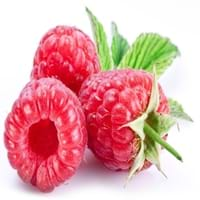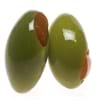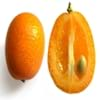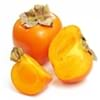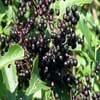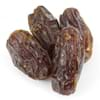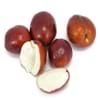Health Benefits
Cancer prevention, Helps in cartilage regeneration, Prevents macular degeneration, Treatment of alzheimer's disease
Cancer prevention, Heart care, Prevents macular degeneration, Reduces blood circulation problems
General Benefits
Anti oxidant properties, Anti-inflammatory properties, Boosts immune system, Controls blood pressure, Digestive aid, Maintains healthy cholesterol level
Anti-inflammatory properties, Controls blood sugar levels, Digestive aid, Eye care, Helps in weight loss
Skin Benefits
Hydrates skin, Skin rejuvenation, Treatment of skin diseases
Anti-aging benefits, Brightens and lightens complexion
Hair Benefits
Acts as moisturizer, Good conditioner, Regulates hair growth
Acts as moisturizer, Regulates hair growth, Shiny hair
Allergy Symptoms
NA
Breathing difficulty, Eczema, Hives, Itching, Nasal congestion, Runny nose, Sneezing, Watery eyes, Wheezing
Side Effects
Affects blood glucose levels, Dizziness, Stomach pain
Allergic reaction
Best Time to Eat
Hardly eaten raw, Olive oil is consumed for many purposes.
Best if taken as a breakfast (or empty stomach), As a snack in the late afternoon, Don't eat after meal, Morning time (before lunch)
Vitamin B5 (Pantothenic Acid)
Vitamin C (Ascorbic Acid)
Vitamin K (Phyllochinone)
Calories in Fresh Fruit with Peel
Calories in Fresh Fruit without Peel
Not Available
Not Available
Calories in Frozen Form
Not Available
Season
Spring, Summer
Summer
Varieties
Manzanillo, Sevillano, Mission, Ascolano, Barouni, Gordal, Rubra and Picholine
Amity, August Red, Boyne, Canby, Caroline, Comet, Dinkum, Dorman Red, Latham, Meeker, Black Hawk, Hayda, Lauren, Meeker and Latham
Color
Black, Green, Purple, Yellow
Black, Purple, Red, Yellow
Origin
Eastern Mediterranean Region
Europe, North Asia
Soil Type
Well-drained
Sandy loam
Climatic Conditions
Warm to hot climate
Cold
Facts about
- In ancient Greece, 1st eye shadow was made by adding olive oil in ground charcoal.
- The most expensive form of olive oil is Extra Virgin.
- Largest type of olive tree is known as donkey tree & smallest one is called bullet.
- There are more than 200 varieties of raspberries.
- In USA, 90% of the raspberries are grown in Washington, California and Oregon.
- They do not ripe after they are picked.
- A raspberry contain 100 to 120 seeds.
Top Producer
Spain
Russia
Other Countries
Algeria, Egypt, Greece, Italy, Morocco, Portugal, Syria, Tunisia, Turkey
Azerbaijan, Canada, Mexico, Poland, Serbia, Spain, Ukraine, United Kingdom, United States of America
Top Importer
United States of America
United States of America
Top Exporter
Italy
Poland
Botanical Name
Olea europaea
Rubus Idaeus
Synonym
Not Available
Not Available
Subkingdom
Tracheobionta
Tracheobionta
Division
Magnoliophyta
Magnoliophyta
Class
Magnoliopsida
Magnoliopsida
Species
O. europaea
R. idaeus
Difference Between Olive and Raspberry
We might think that Olive and Raspberry are similar with respect to nutritional value and health benefits. But the nutrient content of both fruits is different. Olive and Raspberry Facts such as their taste, shape, color, and size are also distinct. The difference between Olive and Raspberry is explained here.
The amount of calories in 100 gm of fresh Olive and Raspberry with peel is 115.00 kcal and 53.00 kcal and the amount of calories without peel is Not Available and Not Available respectively. Thus, Olive and Raspberry belong to High Calorie Fruits and Low Calorie Fruits category.These fruits might or might not differ with respect to their scientific classification. The order of Olive and Raspberry is Lamiales and Rosales respectively. Olive belongs to Oleaceae family and Raspberry belongs to Rosaceae family. Olive belongs to Olea genus of O. europaea species and Raspberry belongs to Rubus genus of R. idaeus species. Beings plants, both fruits belong to Plantae Kingdom.

